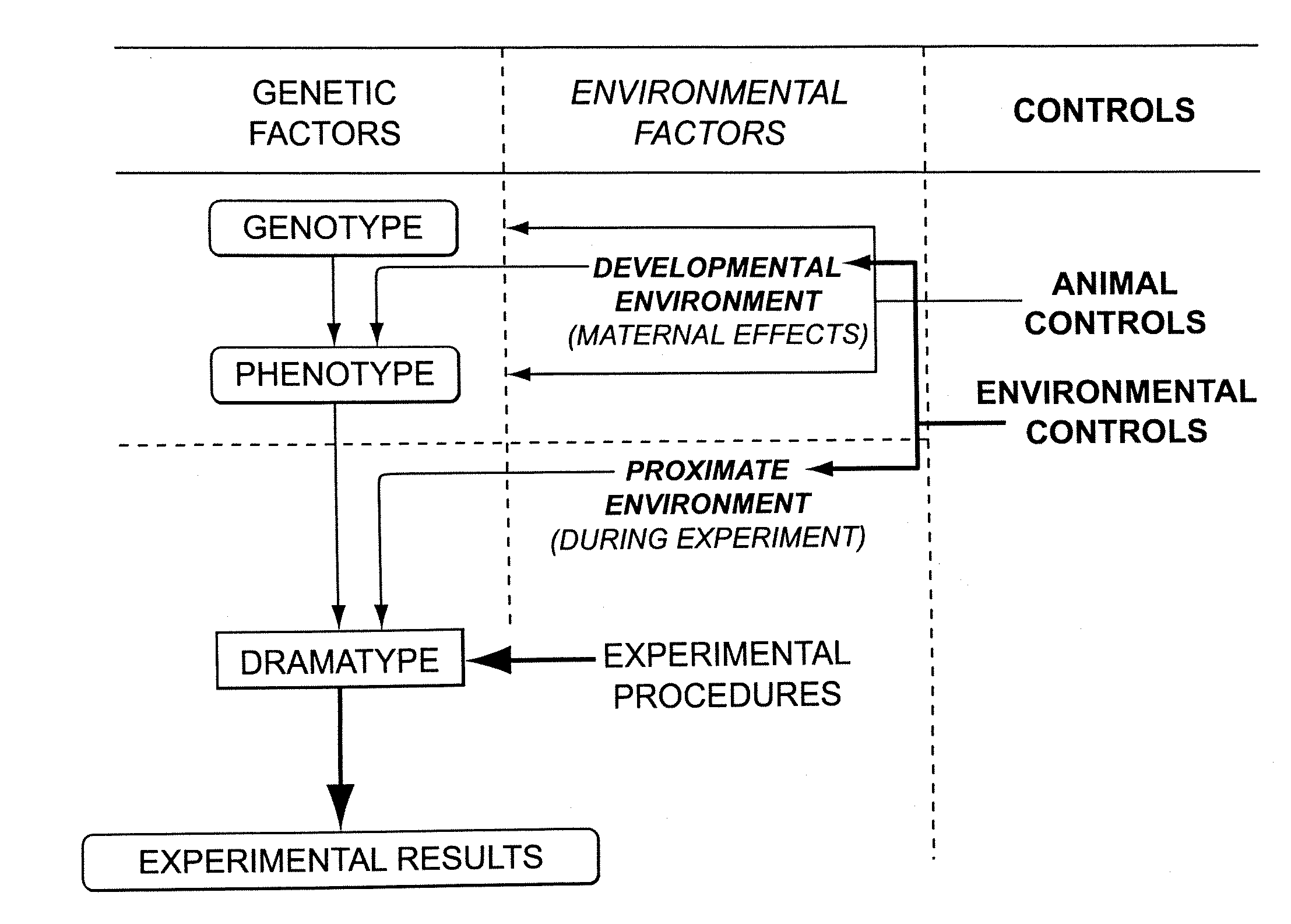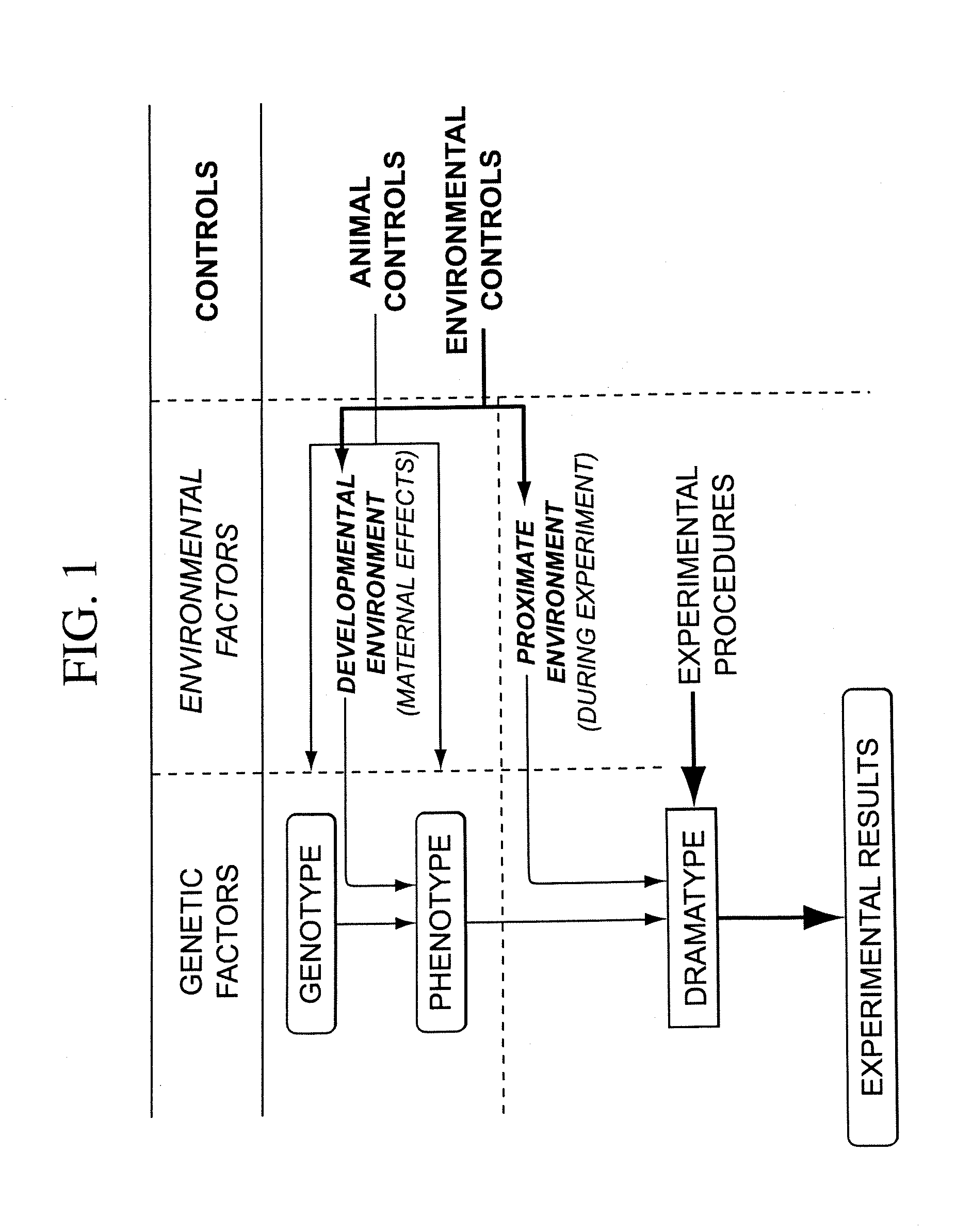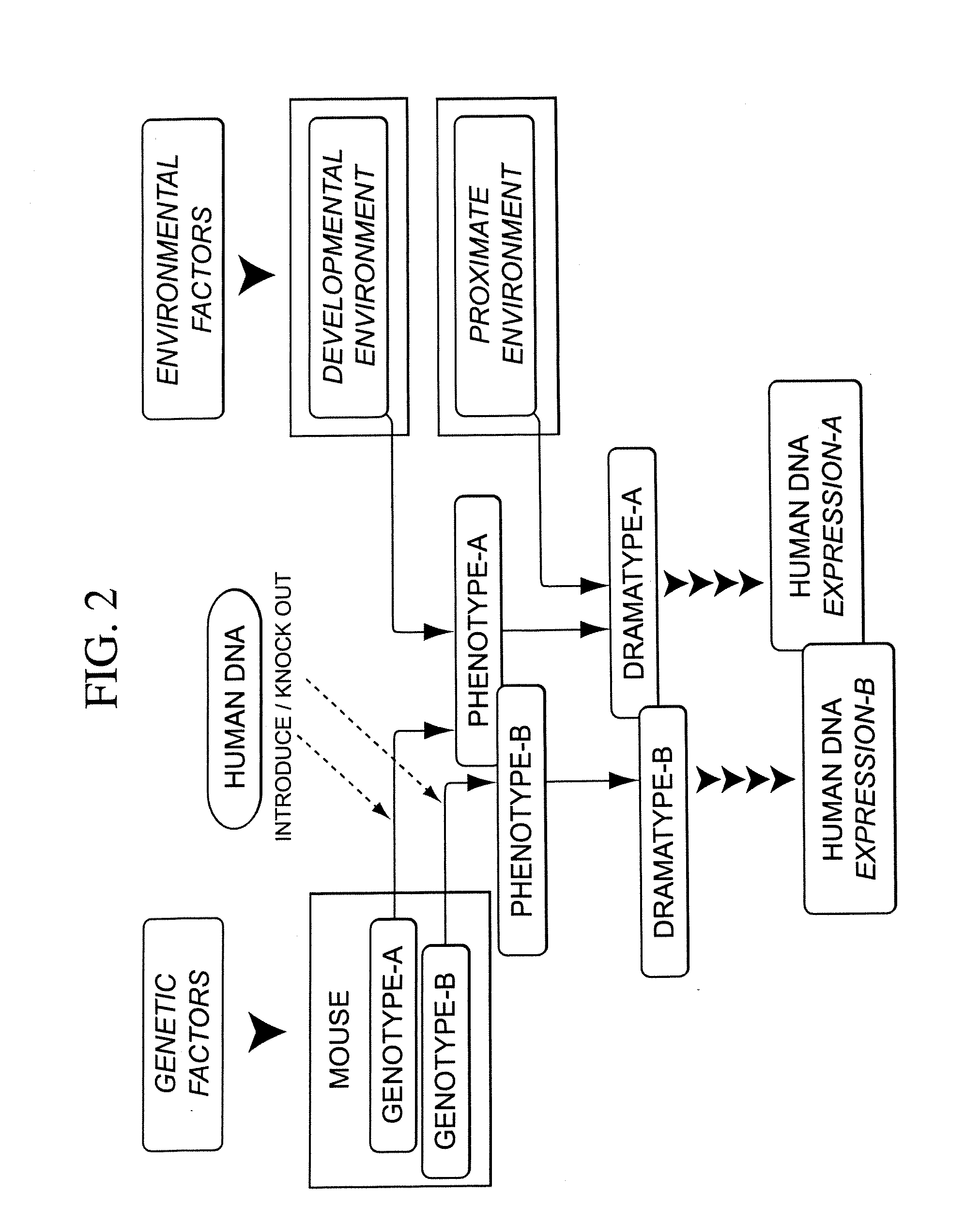Methods for developing animal models
a technology of animal models and methods, applied in the field of methods for the development of mutant animals, can solve the problems of serious deficiencies in the genetic engineering of animals, failure to subject animals to a thorough, rigorous and reliable validation process, and inability to ensure the identicality of animals in both genetic and microbiological aspects
- Summary
- Abstract
- Description
- Claims
- Application Information
AI Technical Summary
Benefits of technology
Problems solved by technology
Method used
Image
Examples
example 1
Super Speed Congenic Method
[0108]The super speed congenic method is graphically illustrated in FIG. 4. It has been found that sexually premature young mice (immature mice) are sensitive to exogenous gonadotropin. Accordingly, superovulation in such immature mice can be induced by injections of the gonadotropin. The use the superovulation procedure for animal production significantly shortens the period required for changing the genetic background of the mutant mice, such as transgenic (Tg) mice, to that of other inbred strains, compared to the traditional procedure based on natural mating. In this study, the suitable conditions to induce superovulation and the developmental ability of the ovulated oocytes after in vitro fertilization in immature mice were examined.
Materials and Methods
[0109]Immature C57BL / 6N female mice (3 to 4 weeks of age) were subjected to superovulation procedure and mature males of the same strain were used as sperm donors for in vitro fertilization (IVF).
[0110...
example 2
Alternative Microbiological Quality Control Method (AMQCM)
Materials and Methods
[0114]Mice: C57BL / 6N mice (10 weeks of age) were used for virus infection; JCL:MCH (ICR) mice (10 to 15 weeks of age) were used as recipients. Virus: Sendai virus (HVJ MN strain) and mouse hepatitis virus (MHV Nu-67 strain) were used. Serological examination: Enzyme linked immunosorbent assay (ELISA) and hemagglutination inhibition (HI) test were performed for HVJ, while ELISA and complement fixation (CF) test were performed for MHV. The virus was infected to C57BL / 6N mice through the nose of mice (day 0, the day of experiment start). PMSG (day 2) and hCG (day 4) were injected into virus-infected C57BL / 6N mice for ovulation. Eggs and sperms were collected from the infected mice on day 5 for in vitro fertilization (IVF), and two-cell embryos were transferred into the oviducts of JCL:MCH (ICR) mice. After parturition (on day 25), pups were nursed by foster mother until weaning (day 53). Weaned mice were rea...
example 3
Transgene Stability and Features of rasH2 Mice as an Animal Model for Short-Term Carcinogenicity Testing
Materials and Methods
Animals
[0117]The transgene was constructed by ligation of each normal part of human activated c-Ha-ras genes with single point mutation at the 12th codon or the 61st codon, and then subcloned into the BamHI site of pSV2-gpt plasmid (Sekiya T, et al., Proc Natl Acad Sci USA 1984; 81: 4771-4775; SekiyaT et al, Jpn J Cancer Res 1985; 76: 851-855). The production of transgenic mice used in this study was described previously (Saitoh et al., Oncogene 1990; 5: 1195-1200). To maintain the foundation colony of the transgenic mouse, C57BL / 6JJic-TgN (RASH2) (Tg-rasH2) mice were obtained by backcrossing male hemizygous rasH2 transgenic mice to female inbred C57BL / 6JJic mice. In this study, 5 week old male Tg-rasH2 mice naturally mated with N20 and Tg-rasH2 mice al N15 obtained from cryopreserved embryos, and 12 week old male C57BL / 6JJic (non-transgenic) mice were used. A...
PUM
| Property | Measurement | Unit |
|---|---|---|
| time | aaaaa | aaaaa |
| pH | aaaaa | aaaaa |
| pH | aaaaa | aaaaa |
Abstract
Description
Claims
Application Information
 Login to View More
Login to View More - R&D
- Intellectual Property
- Life Sciences
- Materials
- Tech Scout
- Unparalleled Data Quality
- Higher Quality Content
- 60% Fewer Hallucinations
Browse by: Latest US Patents, China's latest patents, Technical Efficacy Thesaurus, Application Domain, Technology Topic, Popular Technical Reports.
© 2025 PatSnap. All rights reserved.Legal|Privacy policy|Modern Slavery Act Transparency Statement|Sitemap|About US| Contact US: help@patsnap.com



